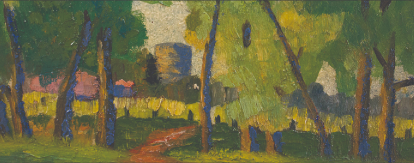Founded in 1919, Munson-Williams-Proctor-Arts-Institute, and updated in 2023, Munson continues to evolve while maintaining traditions of fine art and culture. The Museum of Art features a renowned permanent collection, fascinating exhibitions, and education for all ages in an International-style gallery building designed by architect Philip Johnson and also in Fountain Elms, a Victorian-era Italianate mansion with galleries and period rooms.
The Performing Arts division presents world-famous soloists and ensembles, rising stars, recitals with commentary, cinema, family programs, outdoor festival concerts, special events, and educational activities.
The School of Art offers Pratt Munson, a nationally accredited college program in association with Pratt Institute, and community arts classes for adults, teens, and children.
Programs evolving from the interests and intentions of the founders attract more than 150,000 annually.
Munson was originally named for three generations of one Utica, NY family. Alfred Munson (1793-1854), who moved from Connecticut in 1823, accumulated the initial family fortune from industrial interests in the Northeast, including the manufacturing of burrstones and textiles, coalmines, canal development, and railroad and steamboat transportation. He and his wife, Elizabeth, had two children, Helen (1824-94) and Samuel (1826-81).
In 1846 Helen married Utica, NY lawyer James Watson Williams (1810-73), who soon became involved in his father-in-law's business affairs and served as a lobbyist on his behalf with the state legislature.
Helen Munson Williams, a native of Utica, NY and well-known for her philanthropic efforts in Central New York, was a prolific 19th-century collector of decorative and fine arts. Because she was a shrewd and attentive investor who increased her inheritance severalfold, Helen was able to spend grandly on furnishings and gathered the core of what was to become the family's art collection.
Helen and James had three daughters: Grace Elizabeth (1847-1854); Rachel Munson (1850-1915); and Maria Watson (1853-1935). In 1891, Maria married Thomas R. Proctor (1844-1920), a regional hotel owner and United States Navy veteran. Rachel married Frederick Proctor (1856-1929), Thomas's younger half-brother, who was involved in various investment ventures and was active with community organizations and served on several Utica, NY boards. The Williams home, which began to be called "Fountain Elms" in the 1870s, was the couple's residence for 21 years until Rachel's death in 1915. Neither of the Williams-Proctor couples had surviving children.
Rachel and Maria Williams inherited the fine and decorative arts collections established by their mother and married men whose collecting habits were similar to their own. With a corresponding flair, Frederick and Thomas Proctor amassed watches and other objects characterized as appropriate for male collectors.
After Rachel's death in 1915, the three remaining family members – sister Maria, husband Frederick, and brother-in-law Thomas – drafted their concept of a community cultural organization. In 1919 the art institute was chartered as "an artistic, musical and social center."
Thomas Proctor died in 1920, Frederick in 1929. In May 1936, a few months after Maria's death, Munson-Williams-Proctor Institute opened to the public.
Fountain Elms was maintained as a museum, exhibiting the Proctors' paintings, prints and decorative furnishings as the nucleus of a permanent collection.
In June of 1941, the art institute was granted the power to "provide instruction in higher education at the college level in the field of fine arts with authority to confer the degree of bachelor of fine arts by New York State." This milestone marked the establishment of the School of Art and for more than five decades the School of Art has flourished and continues to offer courses in dance and art to all ages. The 2000 fall semester brought about the first class to attend Pratt Munson.
The original Cultural Program, which offered musical lectures, a record library, and a motion picture program, evolved into the present-day Performing Arts division.
In the post-war period, the Museum of Art actively built its collection and as the Museum's art collection expanded, so did the need for more exhibition space. With this in mind, acclaimed architect Philip Johnson was selected by Munson trustees to design the new art museum. This achievement in design stands today in distinction and grandeur as the Munson Museum of Art and also as a historical landmark that opened in the fall of 1960. With the construction of the museum building, a decision was made to renovate and refurbish Fountain Elms to showcase the museum's 19th-century decorative arts collections. In 1995 an education wing was constructed to unite the two buildings.
A New York State Governor's Arts Award recipient, Munson remains a celebrated venue for art, music, performance, and education for people of every age and background.


